Submitted by WA Contents
Henning Larsen, Cobe and SLA design "one of the world’s leading facilities" for material research
Sweden Architecture News - Aug 21, 2023 - 13:17 2388 views

Henning Larsen, Cobe and landscape architects SLA have built a research facility to be home to the future most powerful accelerator-based neutron source in Lund, Sweden.
Called European Spallation Source (ESS), the 120,000-square-metre facility will advance material research for science and innovation.
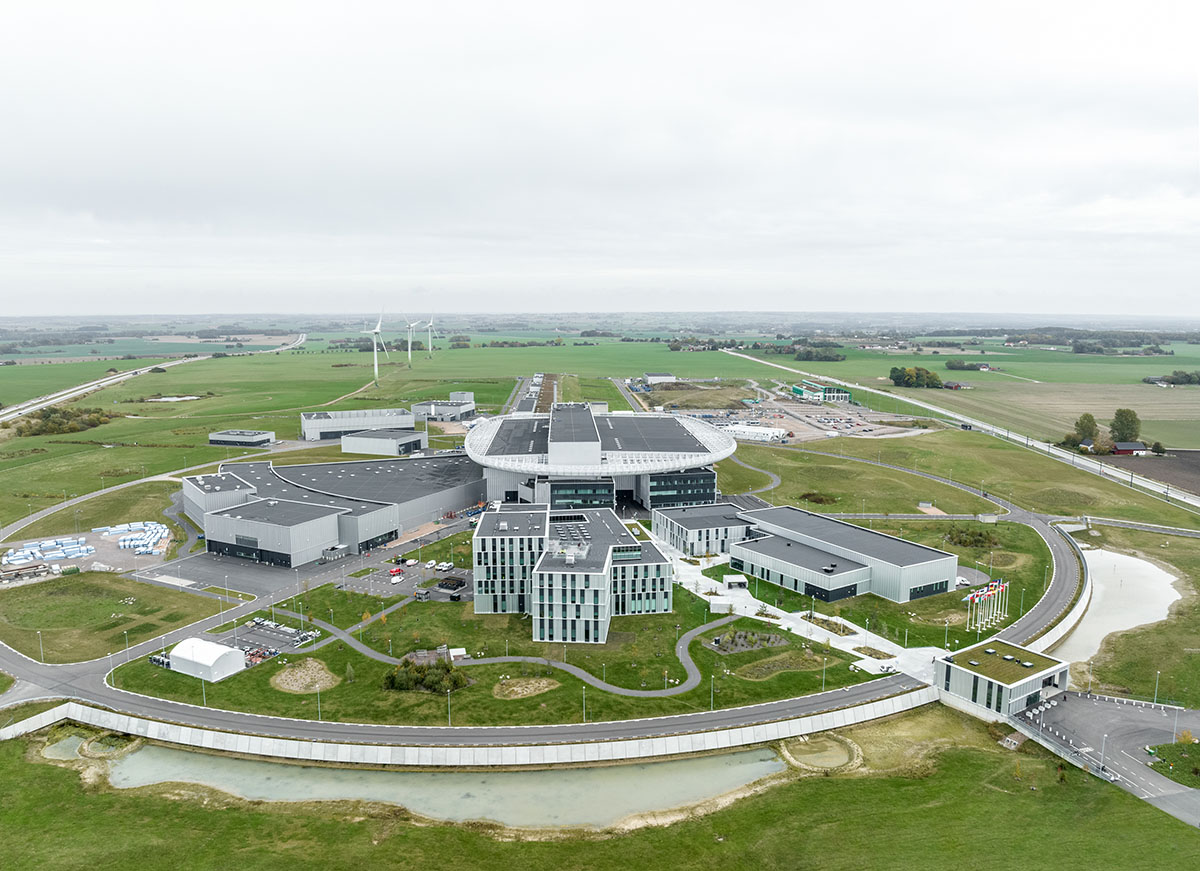
Dubbed as "one of the world’s leading facilities," the village-like facility has a flexible layout and future proof master plan - with a landscaped proton accelerator, a circular target roof and scattered facility buildings intricately and delicately placed in the landscape.
The campus was envisoned as an international hub for world renown scientists, while the design prioritizes a sense of community within the campus, creating a collaboration and learning environment of the highest caliber.
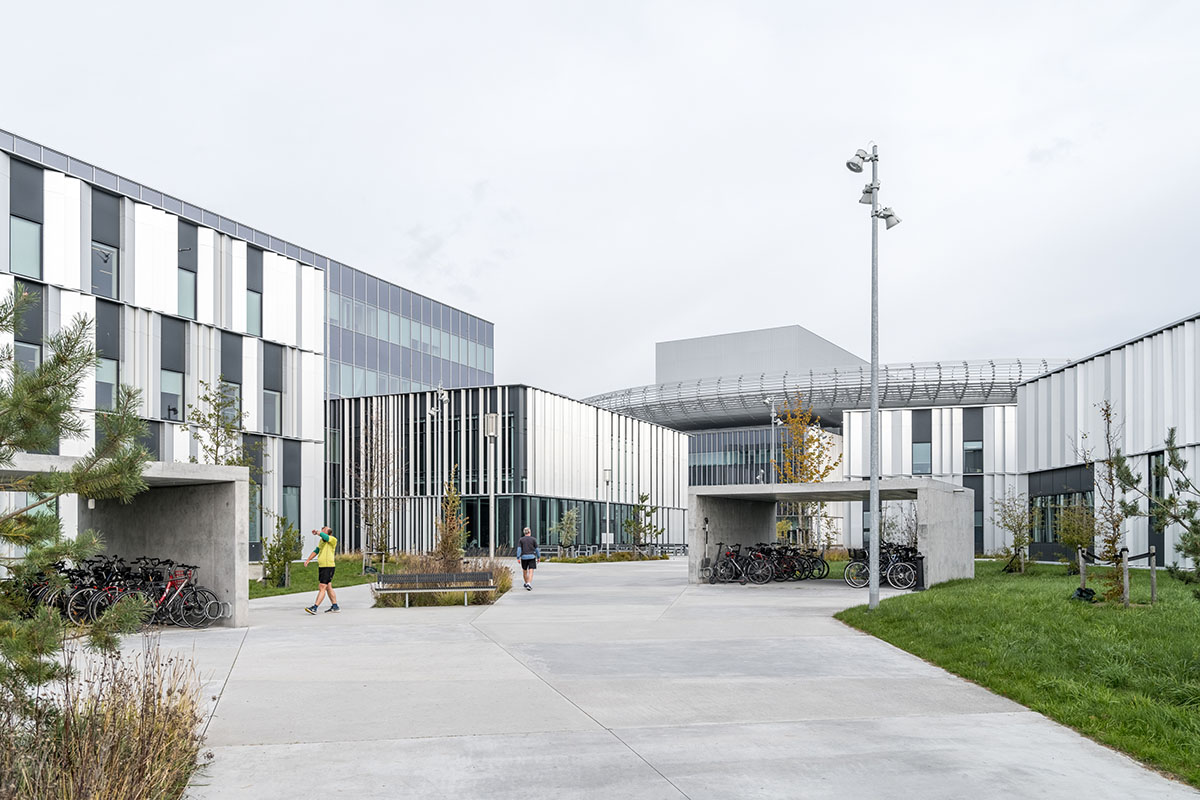
The European Spallation Source is currently under construction and the first experiments are expected to start in 2025/2026.
The new European Spallation Source facility will be fully operational by 2027.
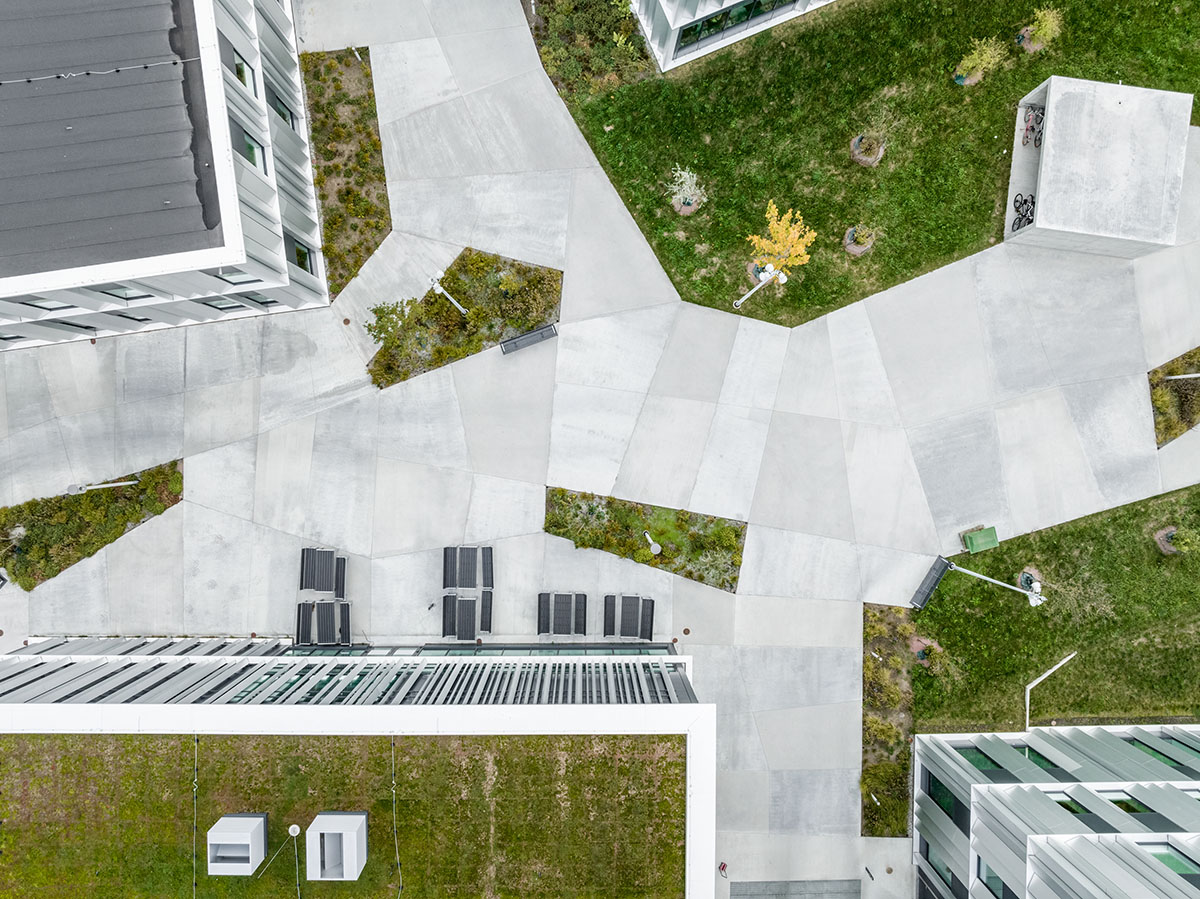
The complex will be used by researchers from material science, chemistry, biology and physics. The main purpose of the facility is "to produce neutrons that scientists can use to study the atomic and molecular structure of materials."
"The insights gathered with instruments at ESS will help propose solutions to society’s most pressing issues including new materials, energy, health and the environment," said Henning Larsen.
Generating neutrons through a process called spallation, the critical component of the BREEAM Outstanding-certified research campus is a 600-metre-long proton accelerator which fires a high-energy proton beam at a target.
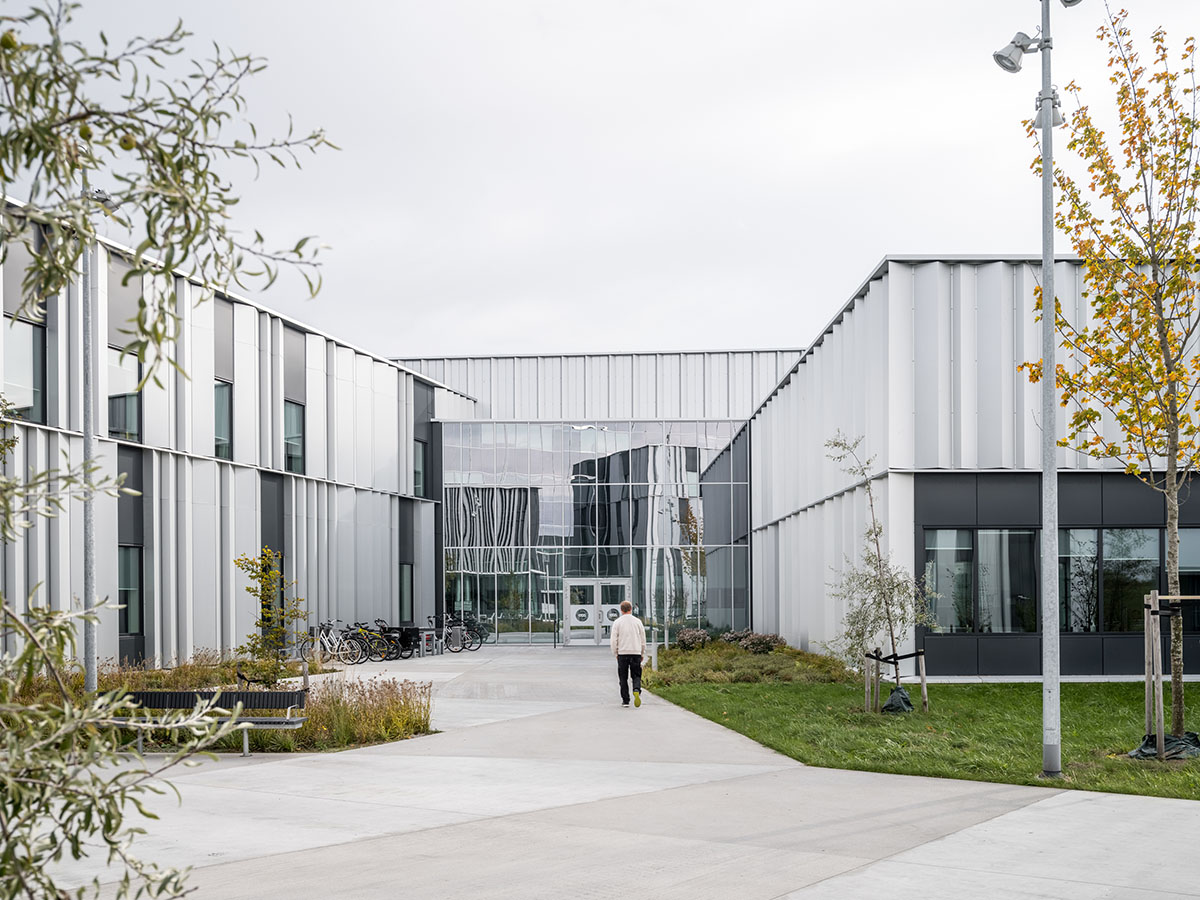
When the protons hit the target, they cause the atoms to break apart, producing a shower of neutrons which are directed towards the instruments that allow scientists to study the properties of materials.
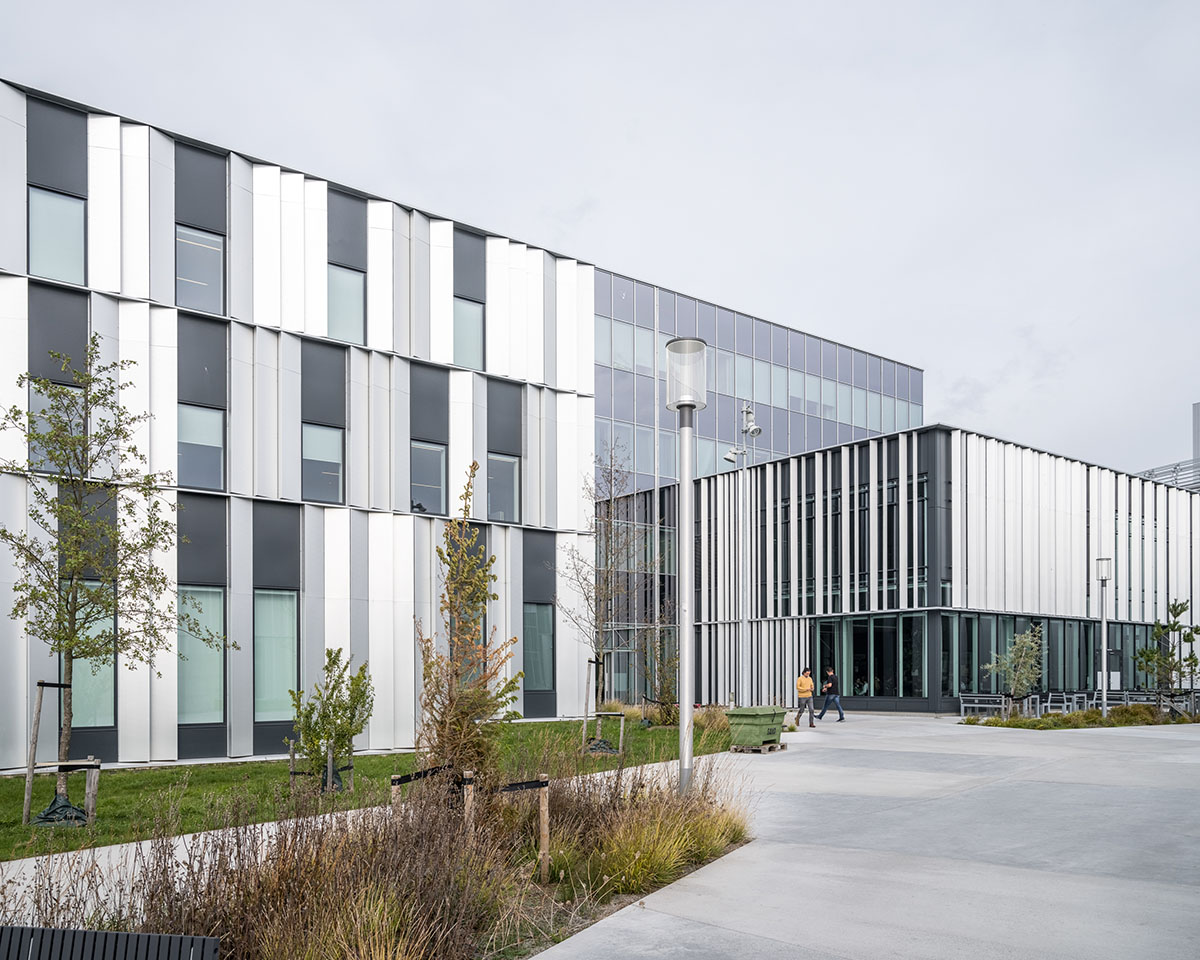
The accelerator itself is situated underground level, housed in a tunnel which sits within the landscape. Disguised beneath a berm of soil, a building known as the ‘klystron gallery’ sits above the accelerator - only visible as a wall on one side, on the other the building blends into the Swedish landscape, appearing to be a meadow.
The ESS research facility becomes a metaphor for the spallation process: a neutron sped through a linear accelerator – colliding with a tungsten core – scattering electrons into the landscape.
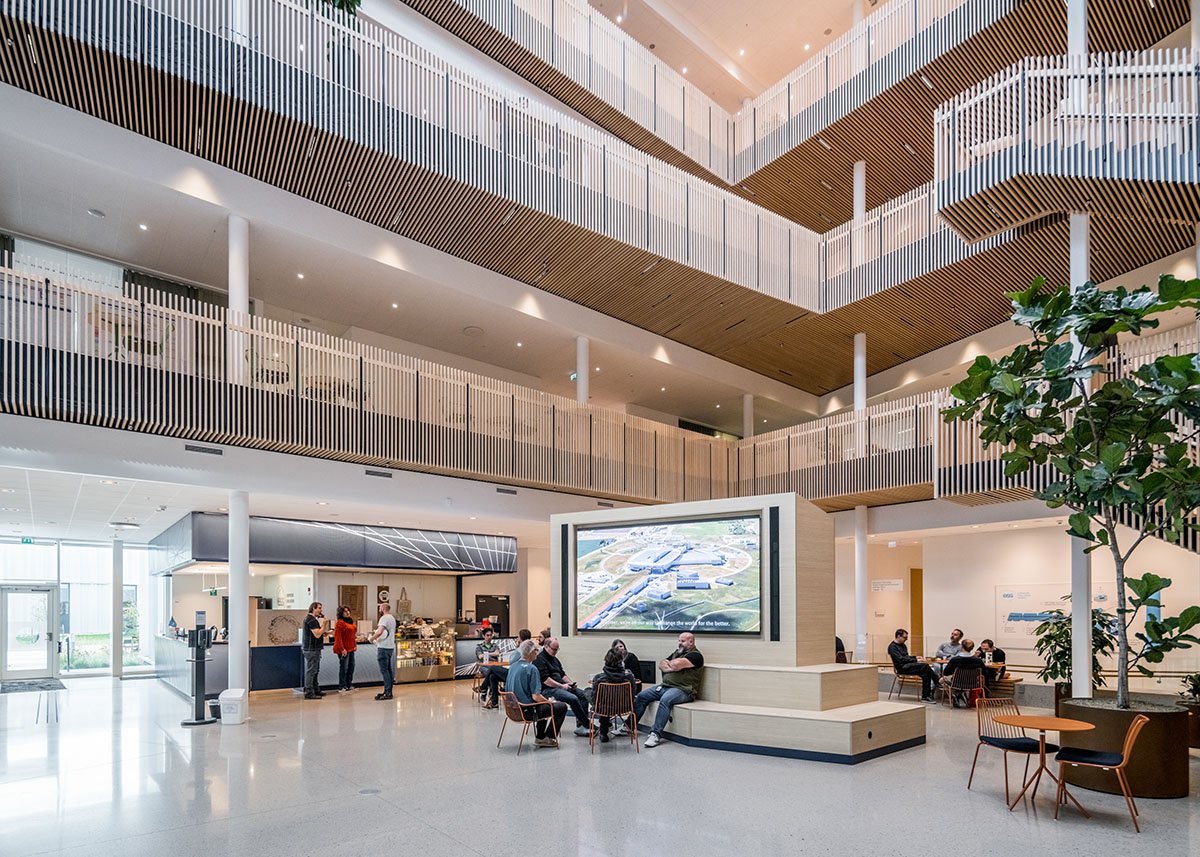
The complex as a whole replicates this process through its layout generating a flexible, future proof master plan – a landscaped proton accelerator, a circular target roof and scattered facility buildings intricately and delicately placed in the landscape.
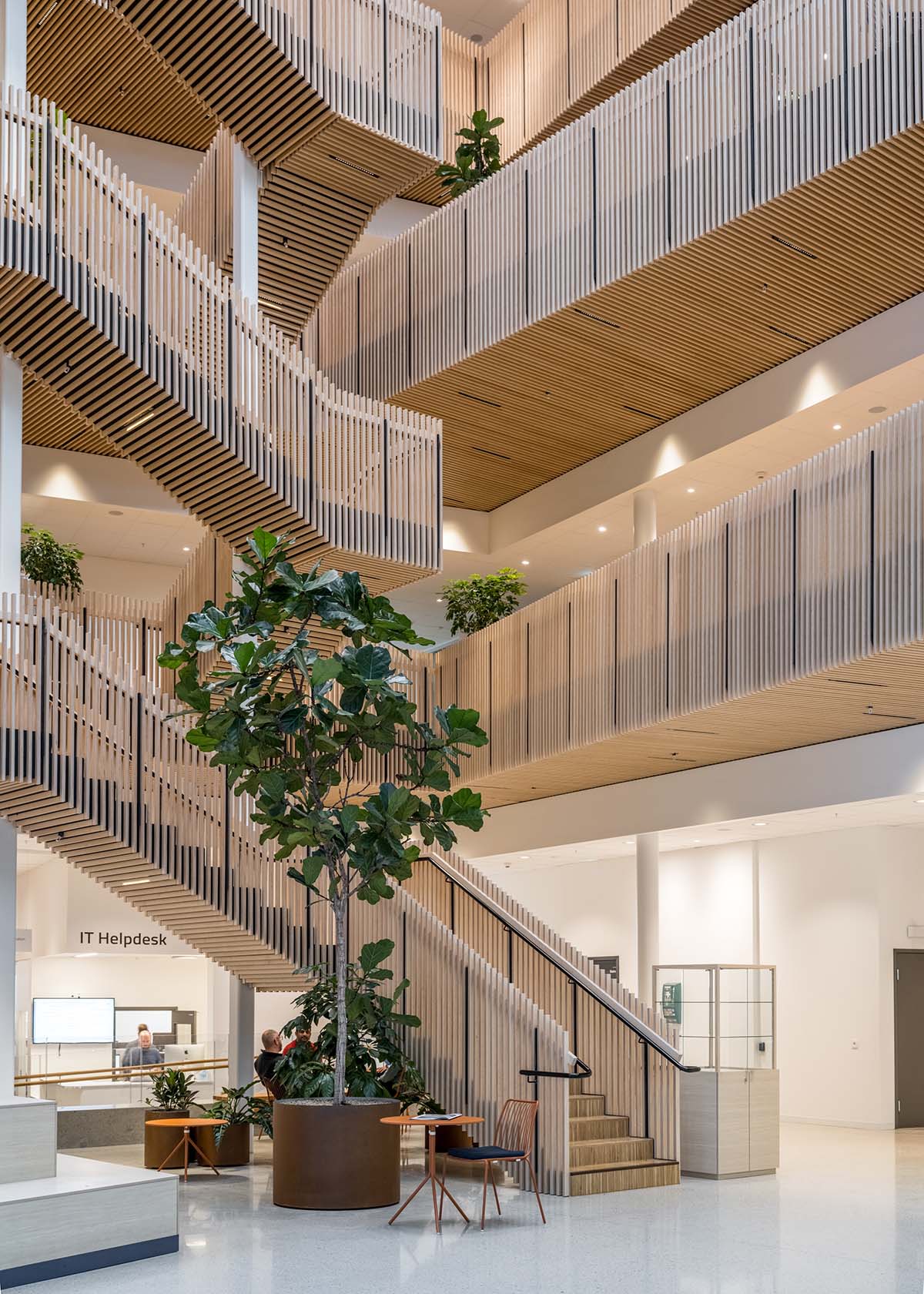
Integral to the success of the campus, Henning Larsen, Cobe and SLA envisioned a village for an international community of scientists; a multitude of spaces allow visiting researchers from global science institutions to meet each other informally both indoors and outdoors, including pathways for walking and jogging and rainwater ponds.
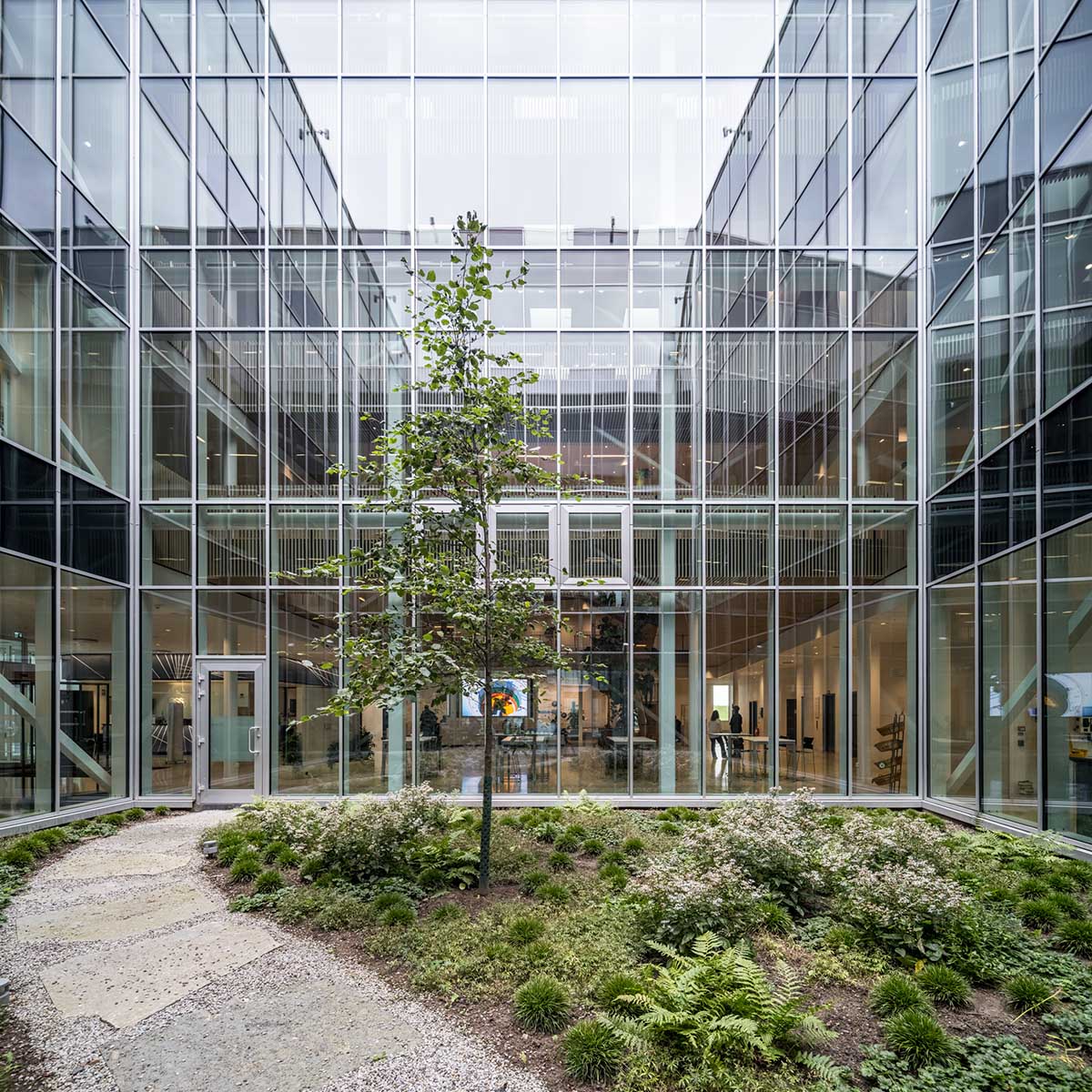
A nature-based ‘fenceless’ landscape with specially designed sunken ‘ha-ha’ fences and diverse vegetation keeps the facility secure without blocking the view whilst also creating a more serene and inviting atmosphere surrounding the facility.
A circular roof above the target hall becomes a central point of orientation for the entire ESS campus, which is a home to one of the most important elements in the spallation process, the tungsten wheel.
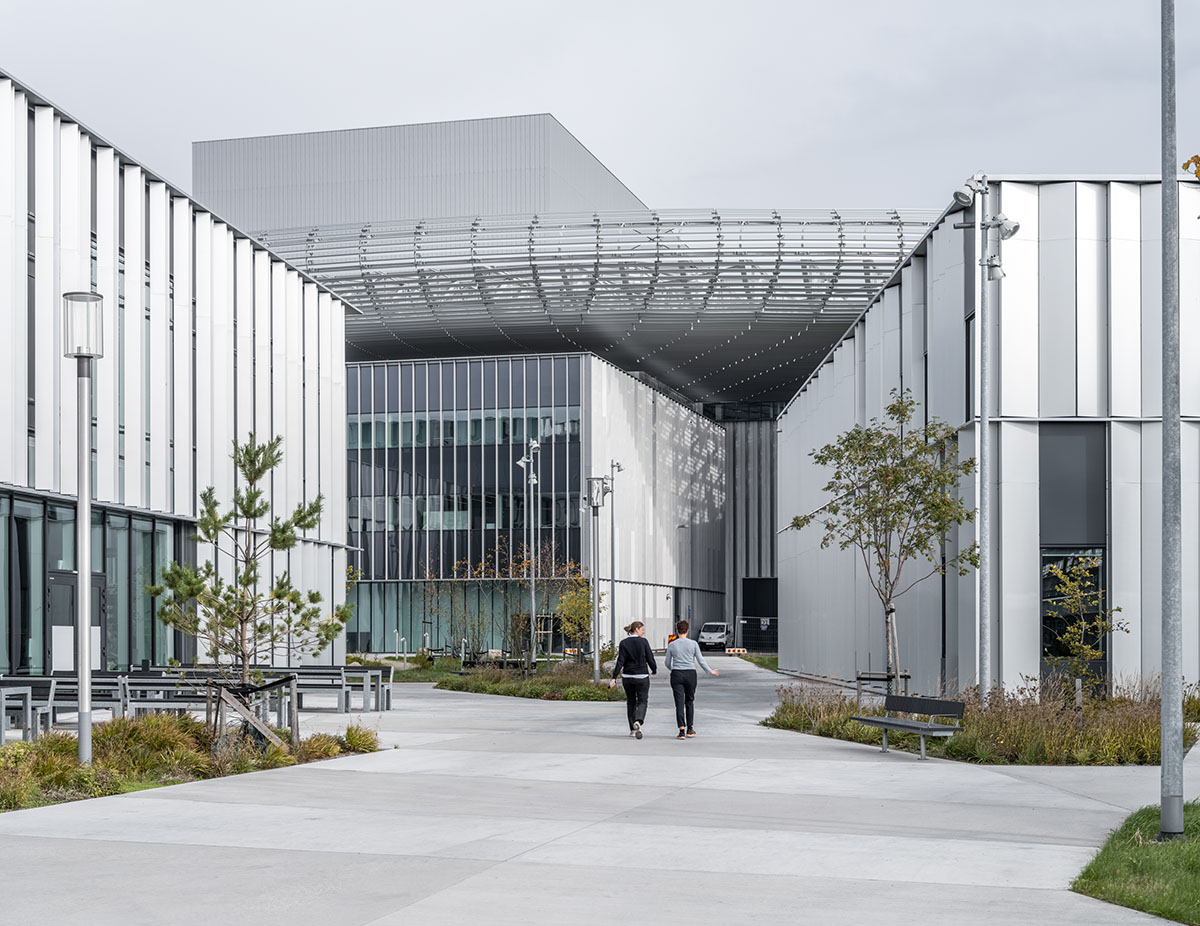
Henning Larsen takes inspiration from the wheel, and the roof’s large, rounded structure appears to float above the hall – a lightweight construction ensures the roof carries its significant volume whilst also letting light into the hall and withstanding Sweden’s snowy climate.
To maintain a coherent design expression for the entire campus, HLA's main intention was to design all buildings like "monolithic land-art-objects placed in the landscape". Each building at ESS varies in size and function, positioned in correlation with the spallation process; strategically, yet without a strict grid.
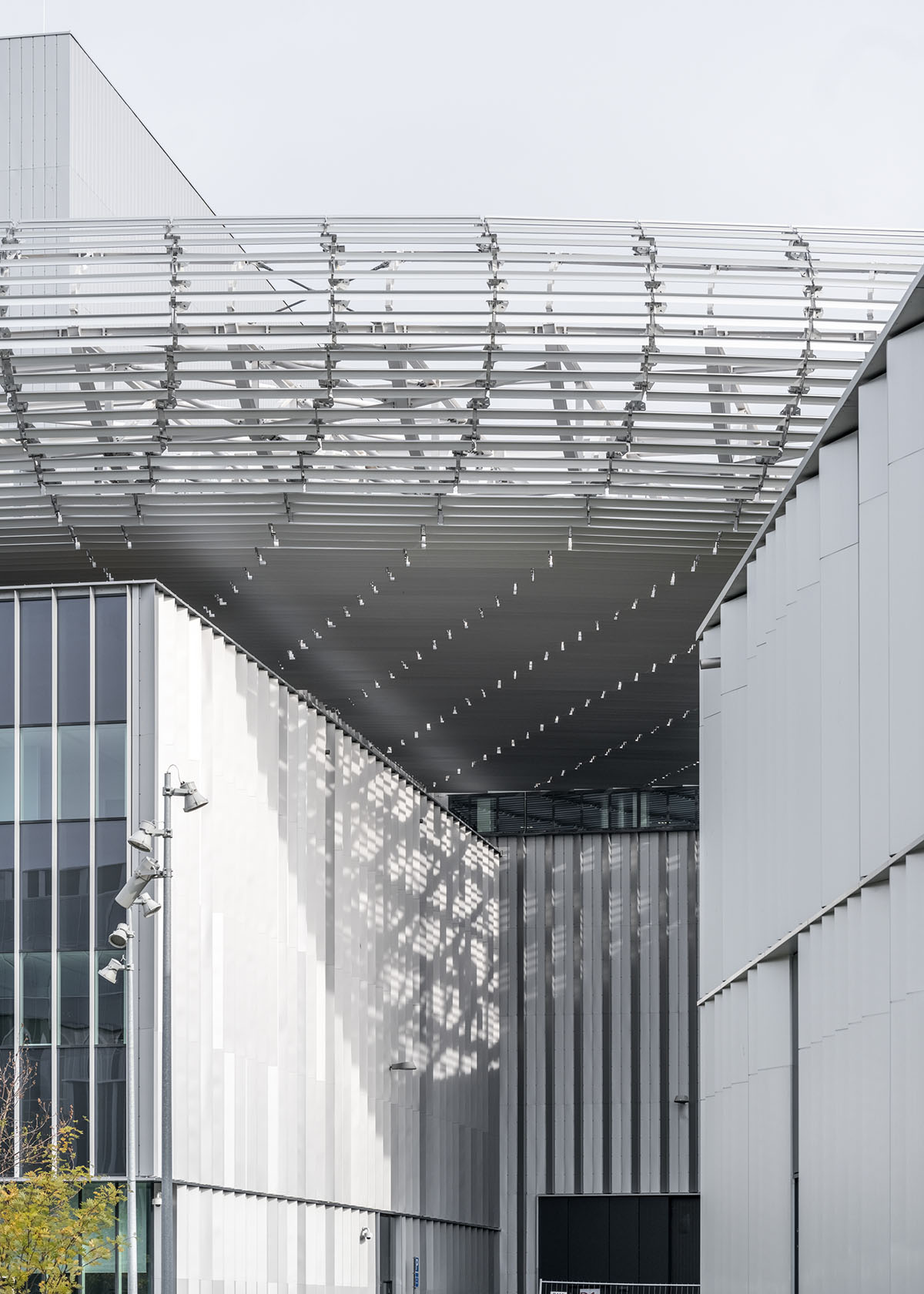
While some volumes are solitary, others are clustered, as it is imperative that the design also has the flexibility to accommodate new buildings in the future.
According to the firm, the exterior reflects the purpose of each building, the type and scale of the facades is based on a graduation scale from industrial to more refined.
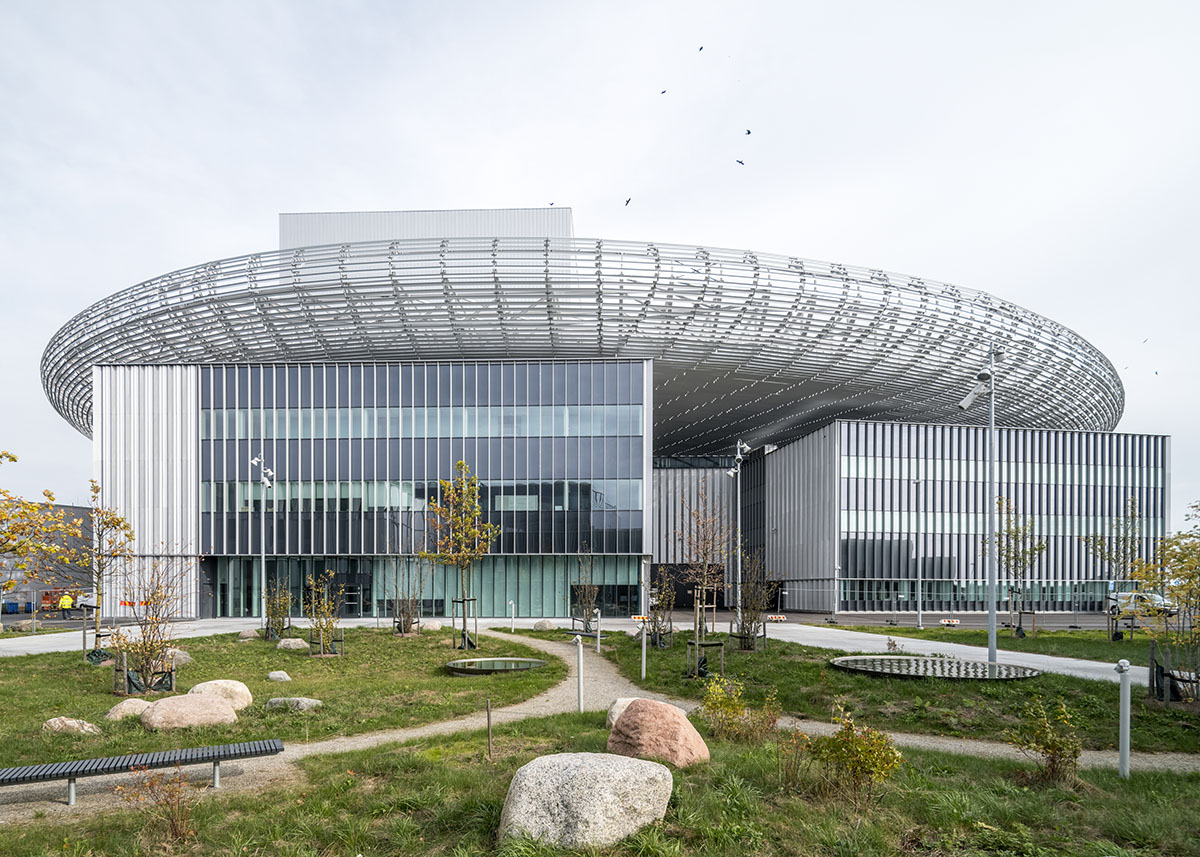
The buildings are comprised of welcome and office spaces, auditoriums and laboratories, the accelerator building, target room and halls.
Industrial facades indicate an interior housing the travelling particles, whereas more refined and shadow facades contain spaces for people to gather, exchange knowledge, and research.
The facility contains laboratories, and meeting halls in its main volume.The accelerator sits at the center of the development and becomes a physical and visual focal point that drives the activity and organization of the campus.
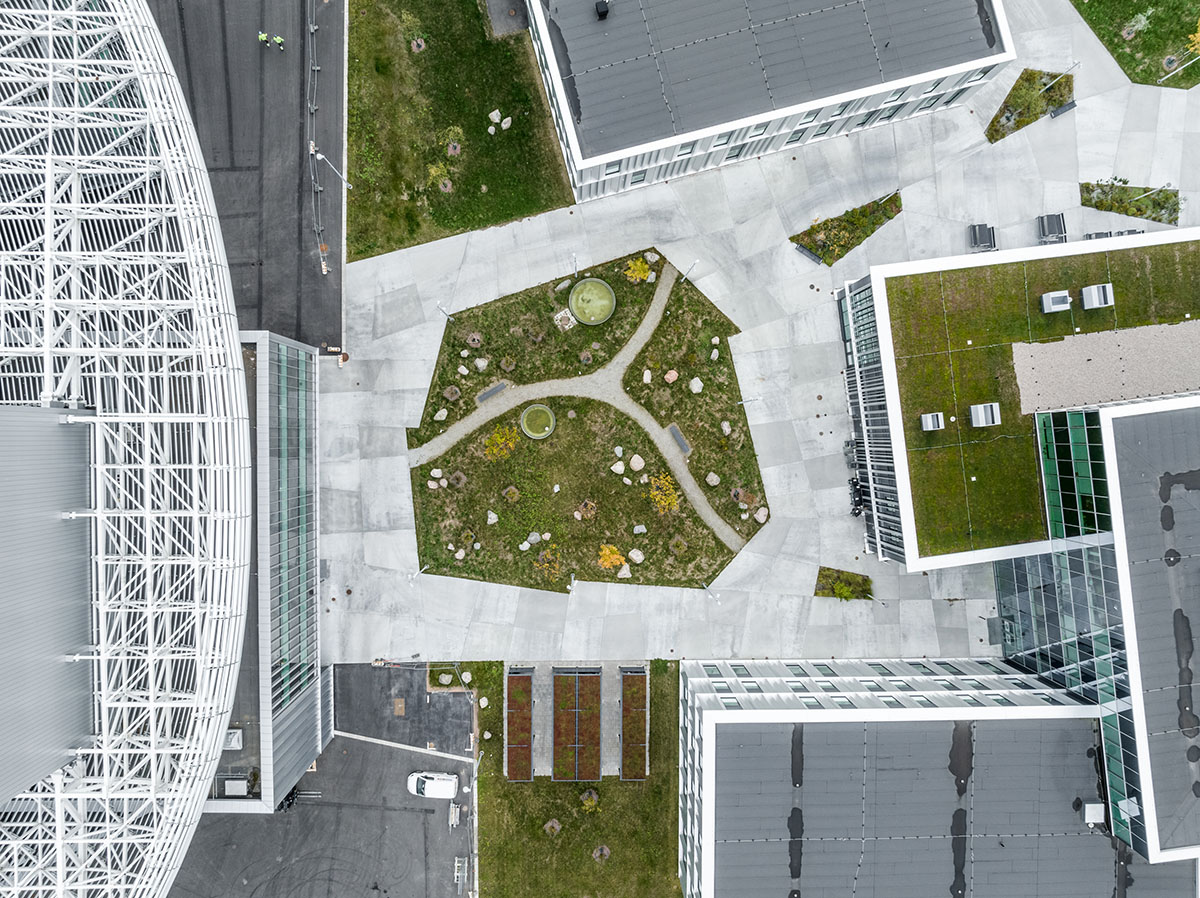
"People, nature, and science are the interconnected and interdependent elements of ESS that are crucial to the success of the campus. The technology at the heart of the European Spallation Source will enable researchers to answer advanced scientific questions within physics, chemistry, geology, biology, and medicine – with the aim of enabling exciting breakthroughs in areas such as energy storage and environmental remediation," said Jakob Strømann-Andersen, Innovation and Sustainability Director, Henning Larsen.
"Prioritizing the experience of the international scientists who will work on the campus was a significant priority for the design team, ensuring their environment is life-centric and supportive of their work."
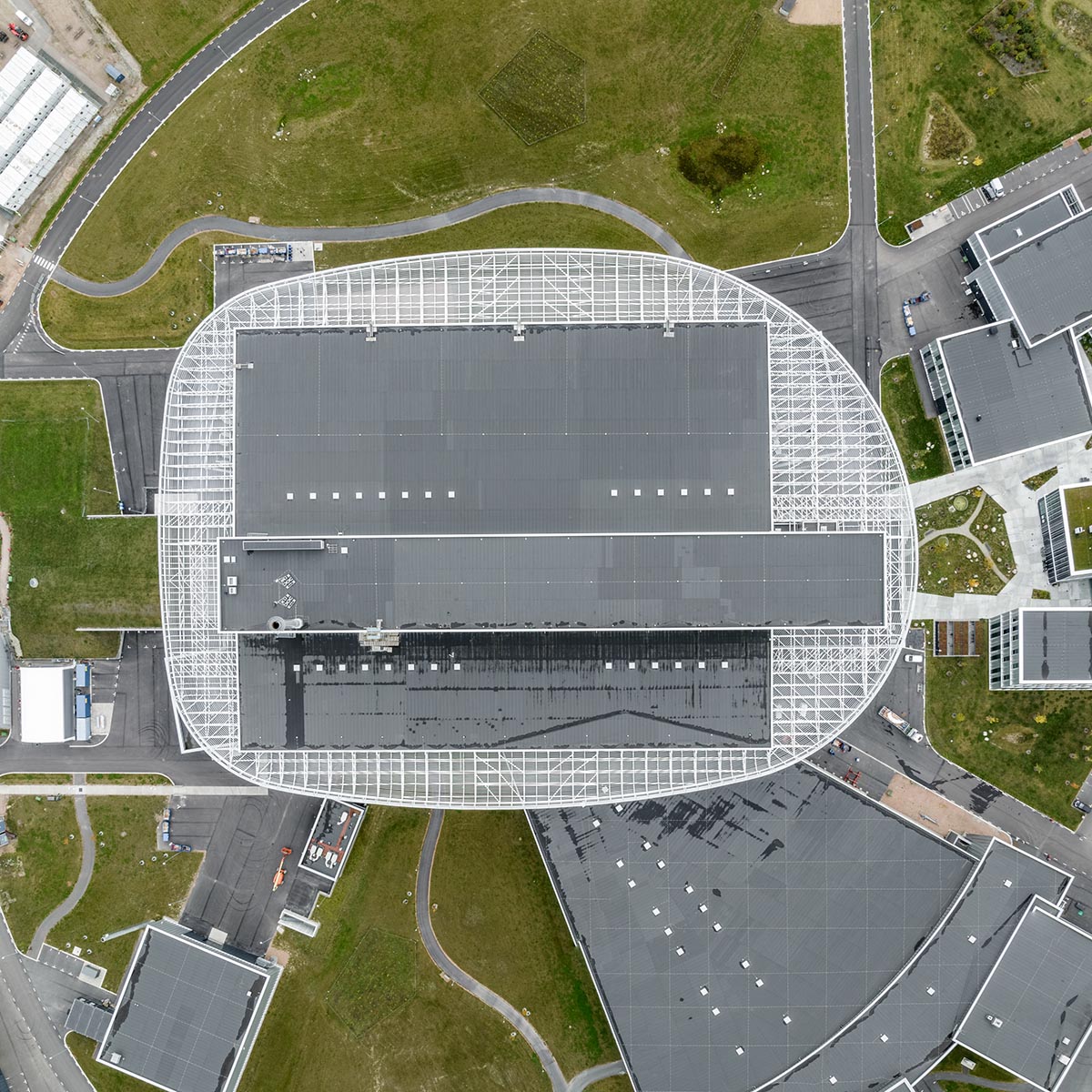
"For example, designing space that encourages the creation of smaller communities within the sizeable campus, based on the belief that a good social life increases creativity and enables greater research. We are proud to lead a design team that has created the environment in which some of the world's most advanced minds will come together to solve the global crises we face," Strømann-Andersen added.
The working and collaboration spaces in the research campus are designed to maximize efficiency of information exchange, a learning environment of international caliber.
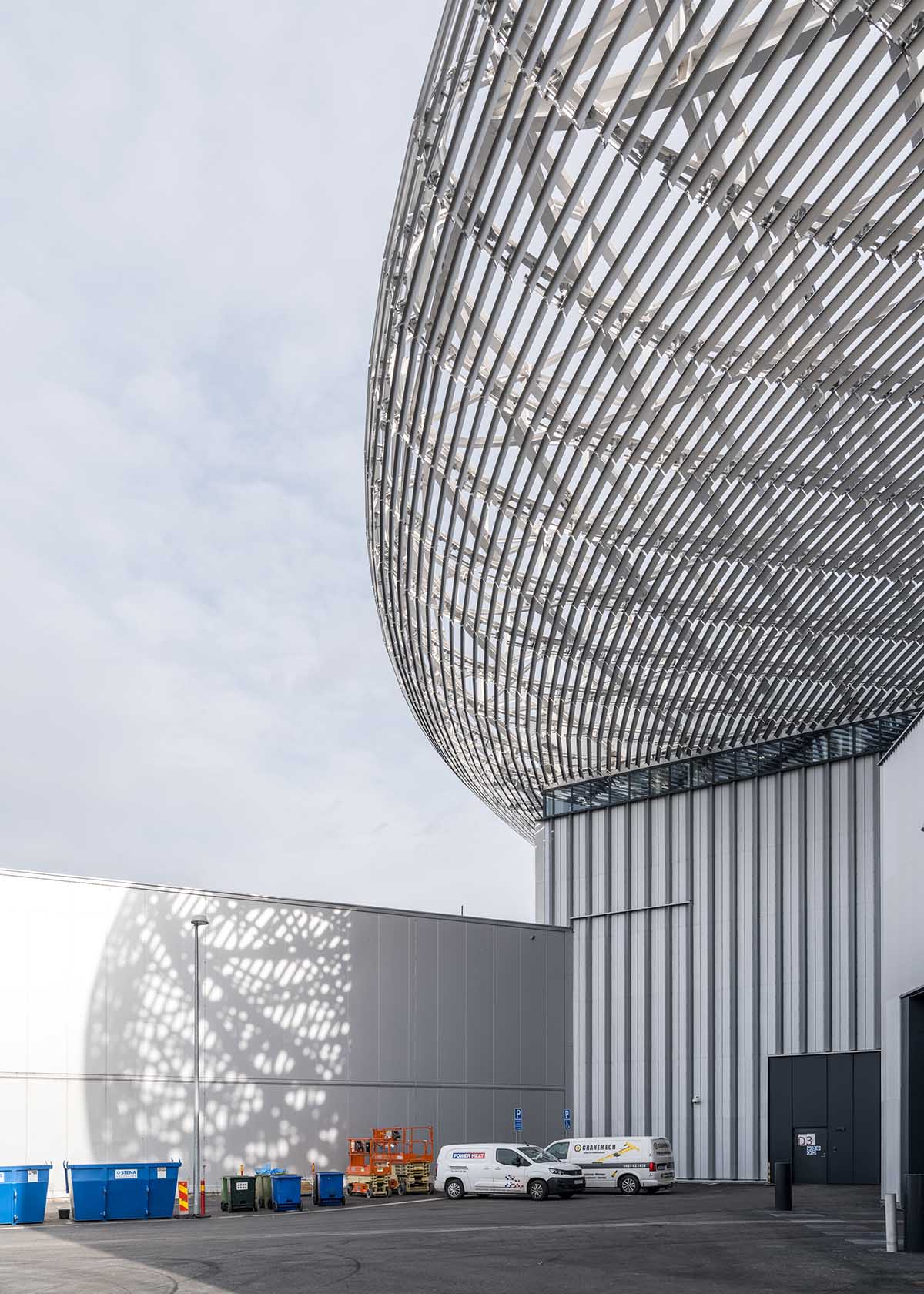
ESS is expected to enable new opportunities for researchers across the spectrum of scientific discovery, including materials and life sciences, energy, environmental technology, cultural heritage and fundamental physics.
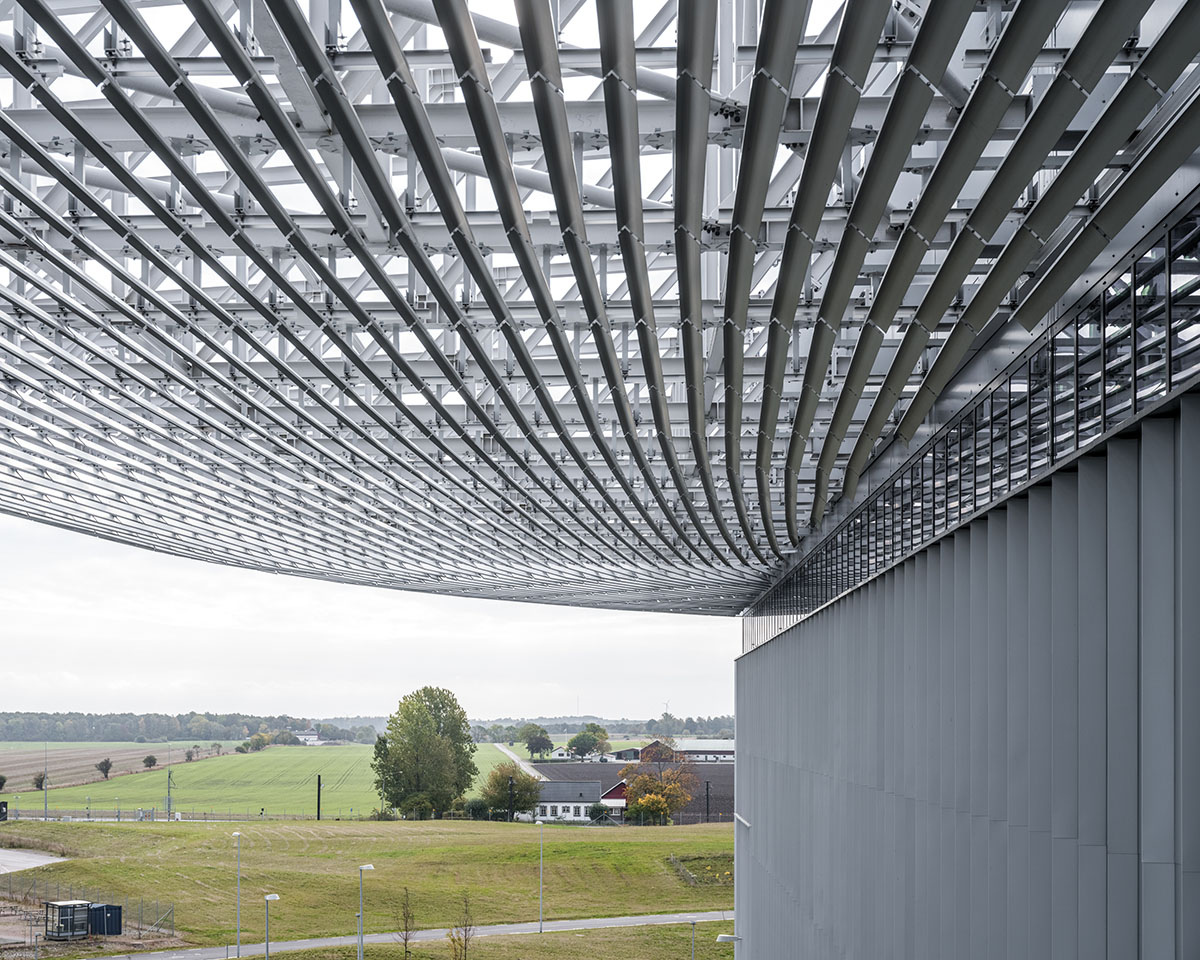
"As a global research destination, ESS may be one of the most important building complexes to be built in the Øresund Region for many years to come. Unlike traditional research facilities of this caliber and size - often conceived as introvert and inaccessible - the ESS is designed as a visually open campus of scattered buildings varying in size and function situated delicately in a lush, recreational, and performative landscape," said Dan Stubbergaard, Founder of Cobe.
"We have focused on creating a vibrant research environment both inside and outside the buildings. The dense campus structure encourages physical movement in, around and between buildings where researchers can meet informally, inspire one another, exchange ideas, and share latest knowledge and discoveries."
"The extrovert nature of the campus plan opens the ESS facility to its surroundings and gives the public a unique peak inside the magnificent world of science. It is our hope that our humanistic design approach will help foster some of the future breakthroughs in science," Stubbergaard added.

For the landscape design, SLA said that "from the very beginning, our goal has been to address the challenge of creating a highly secure landscape without compromising on openness, social amenities, and biodiversity."
"By seamlessly integrating security measures with landscape qualities, ESS's expansive landscape provides a secure framework for the institution while offering the public a unique window into the fascinating world of science."
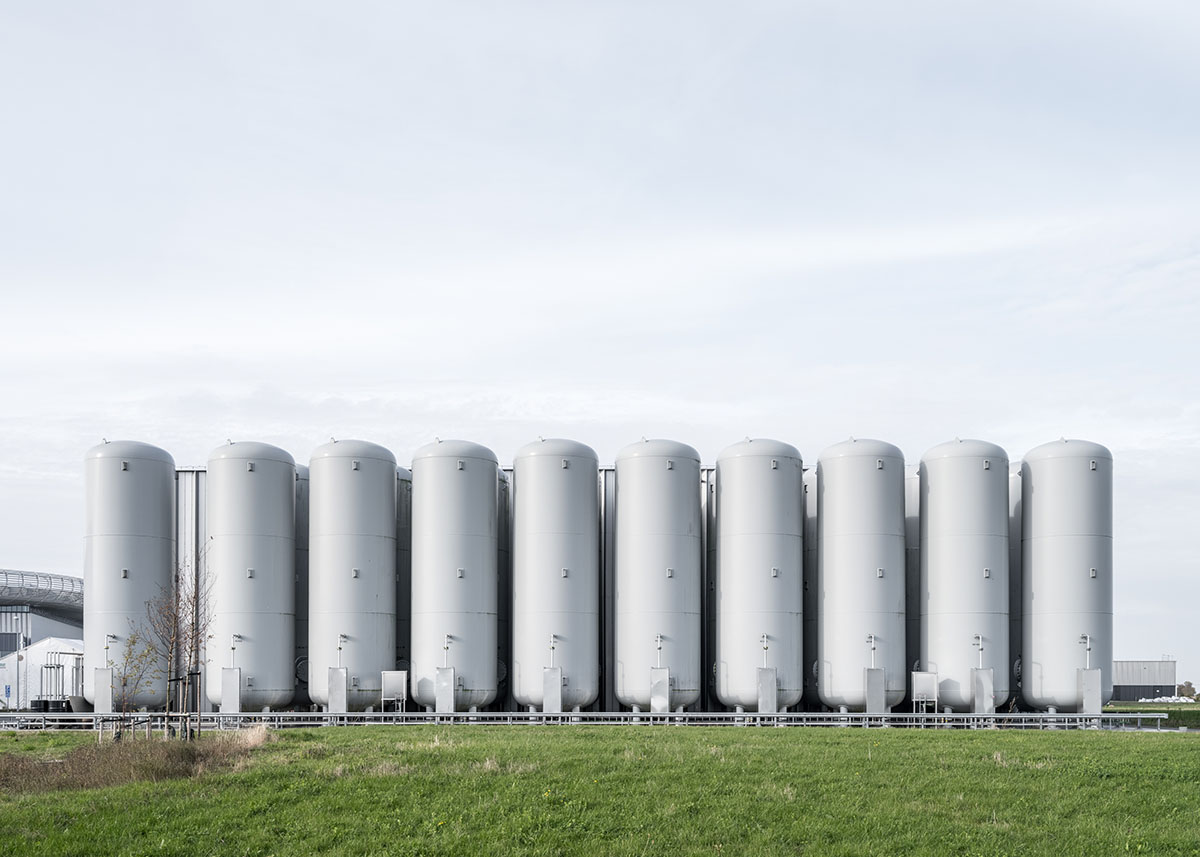
"Through its new typology and variety of natural elements such as meadow, marsh, and wetland, (we have created a campus with natural rainwater management, new habitats for wildlife and insects, and rich nature experiences for the employees. It is a living landscape that will make the land-art character of ESS as a whole grow more and more distinct with every year," SLA added.
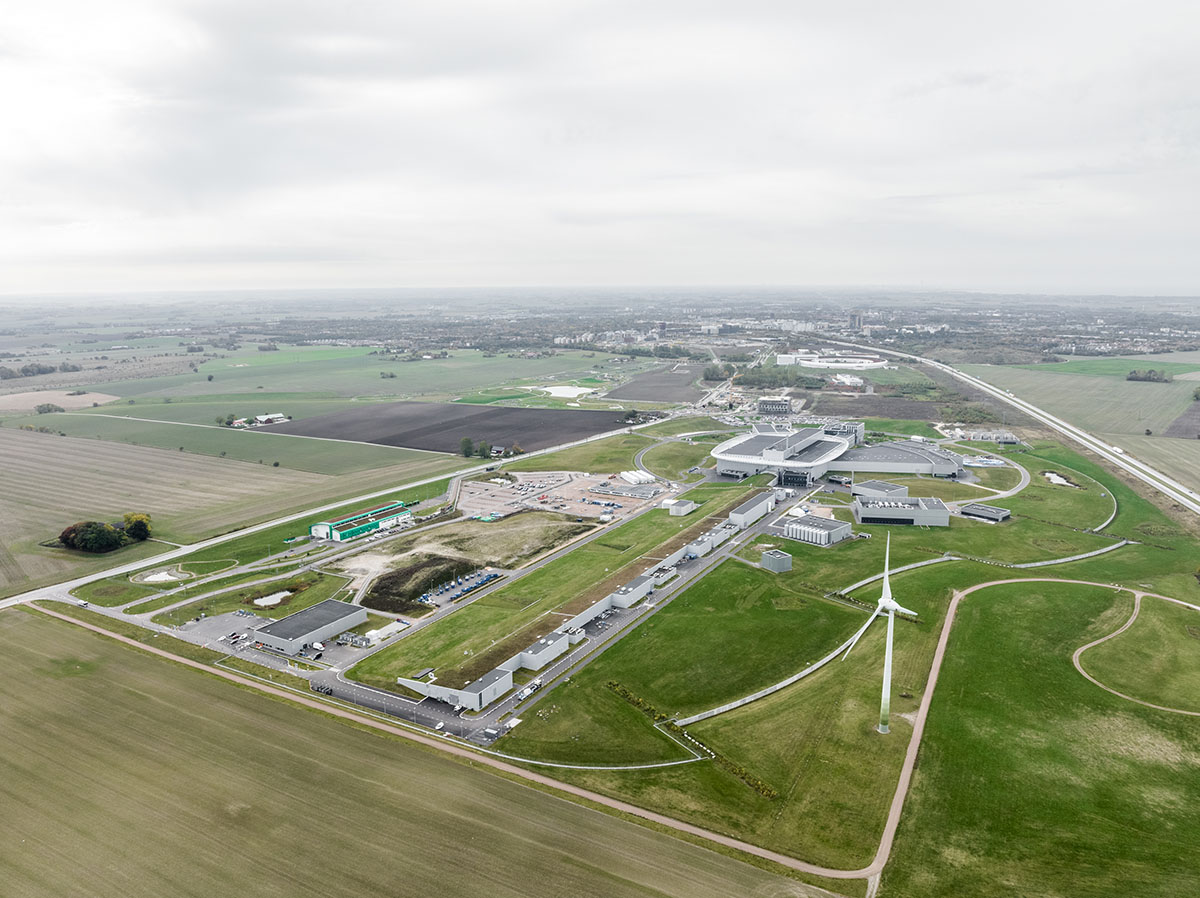
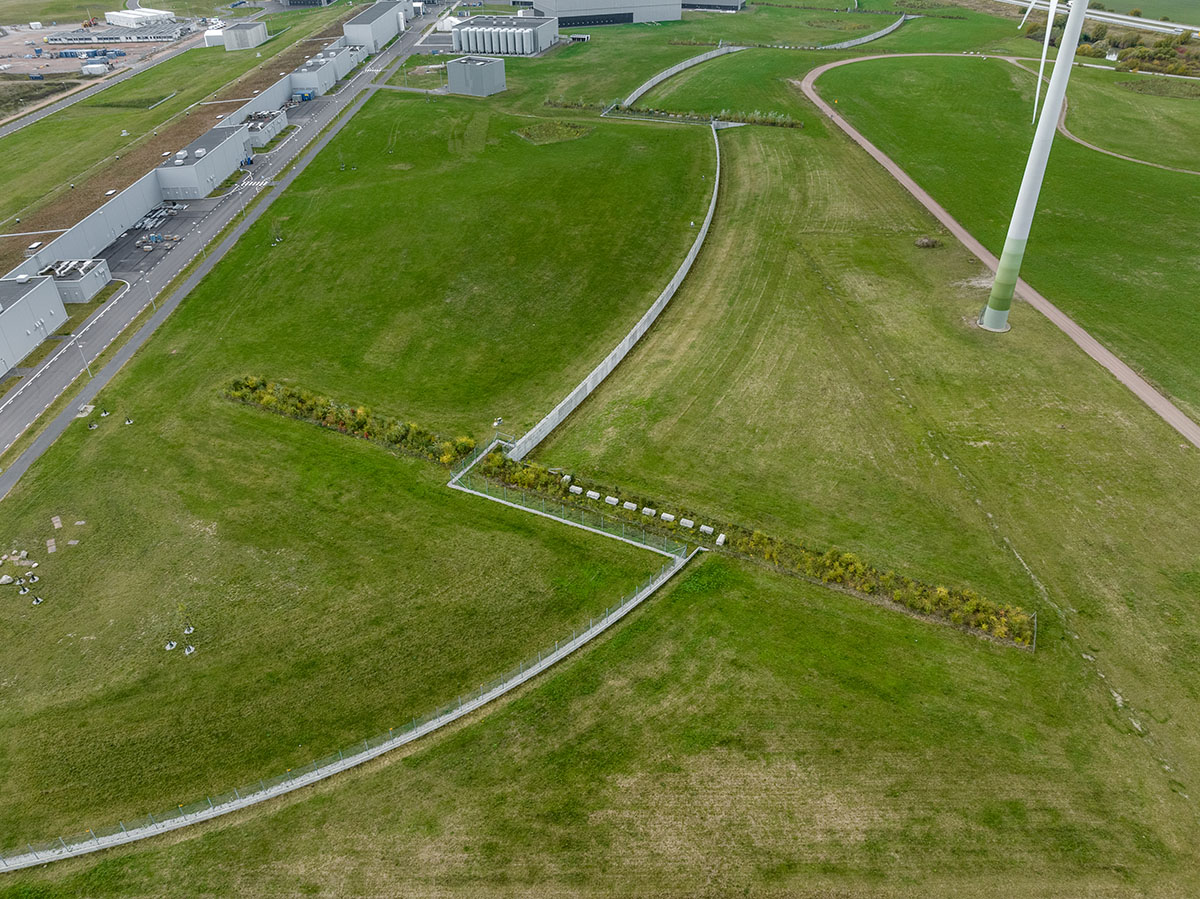
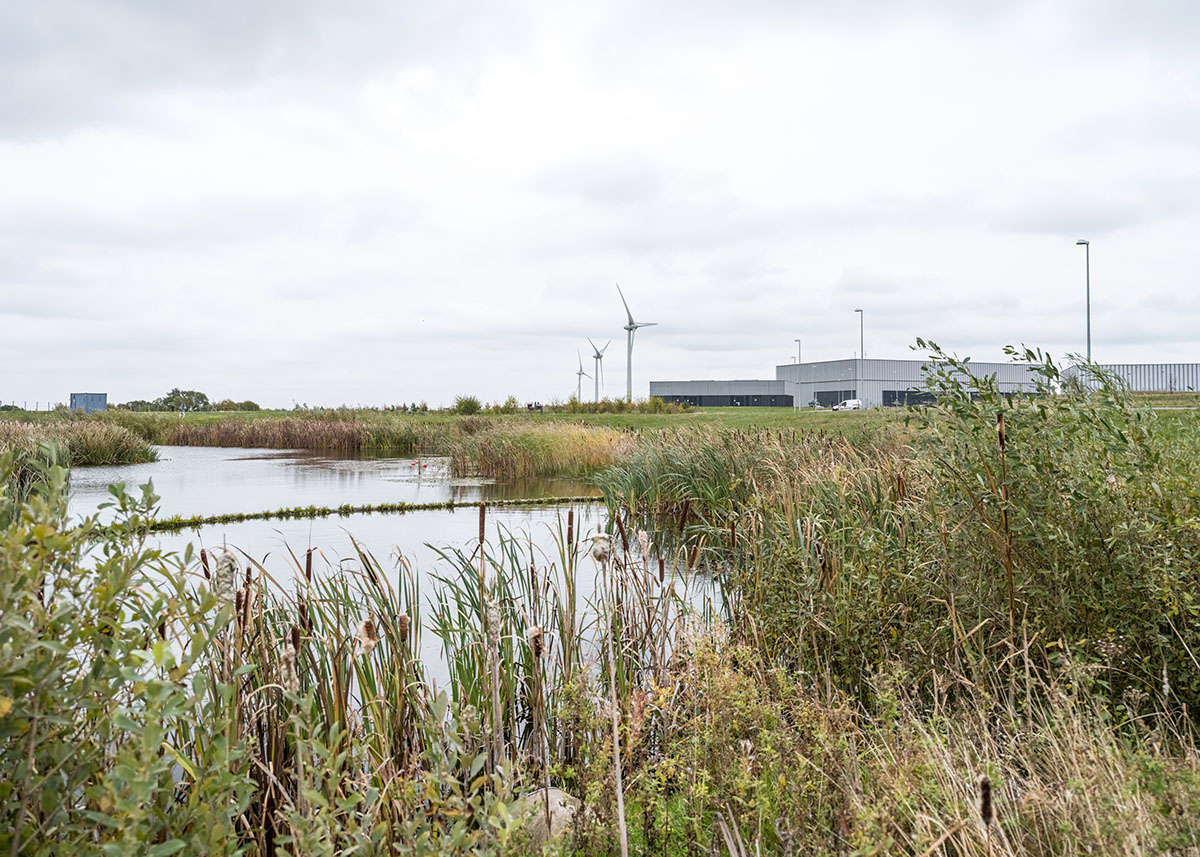
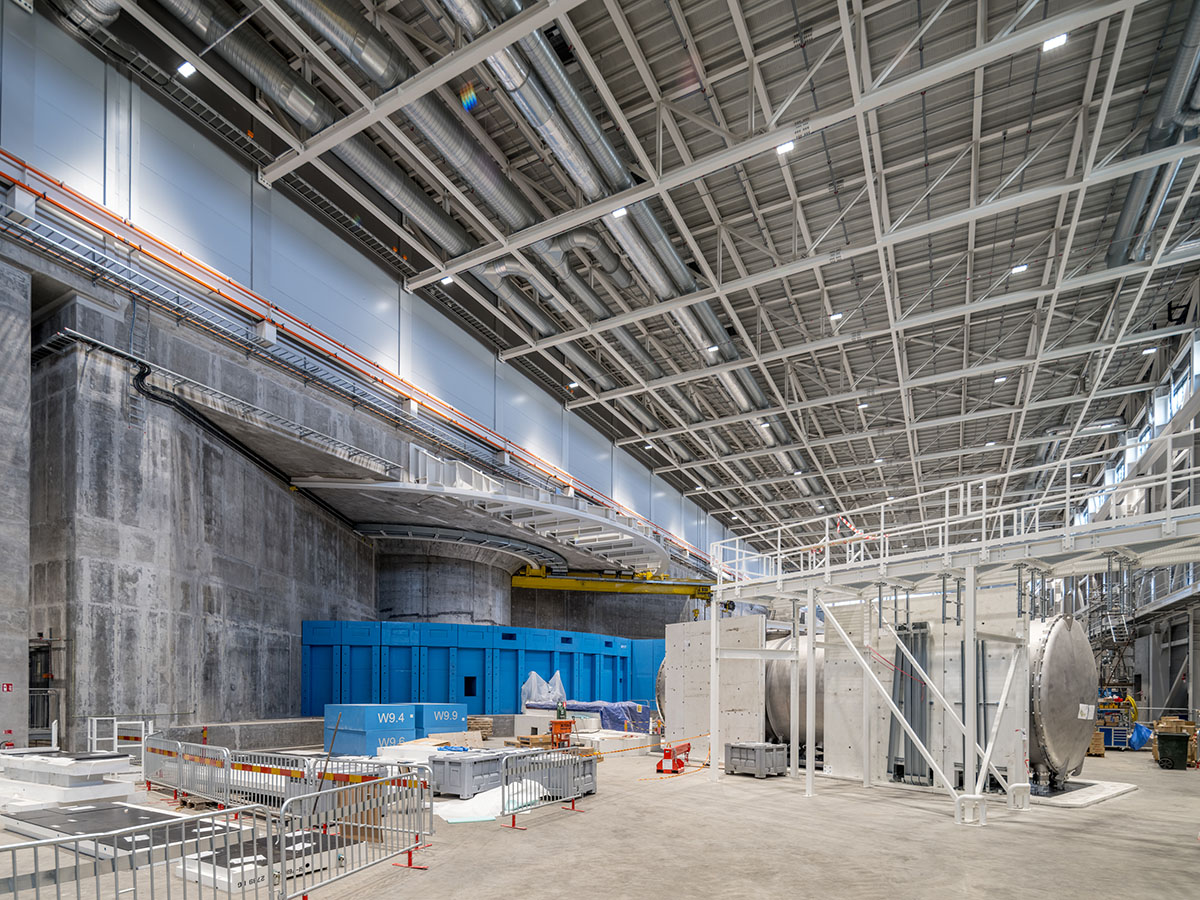
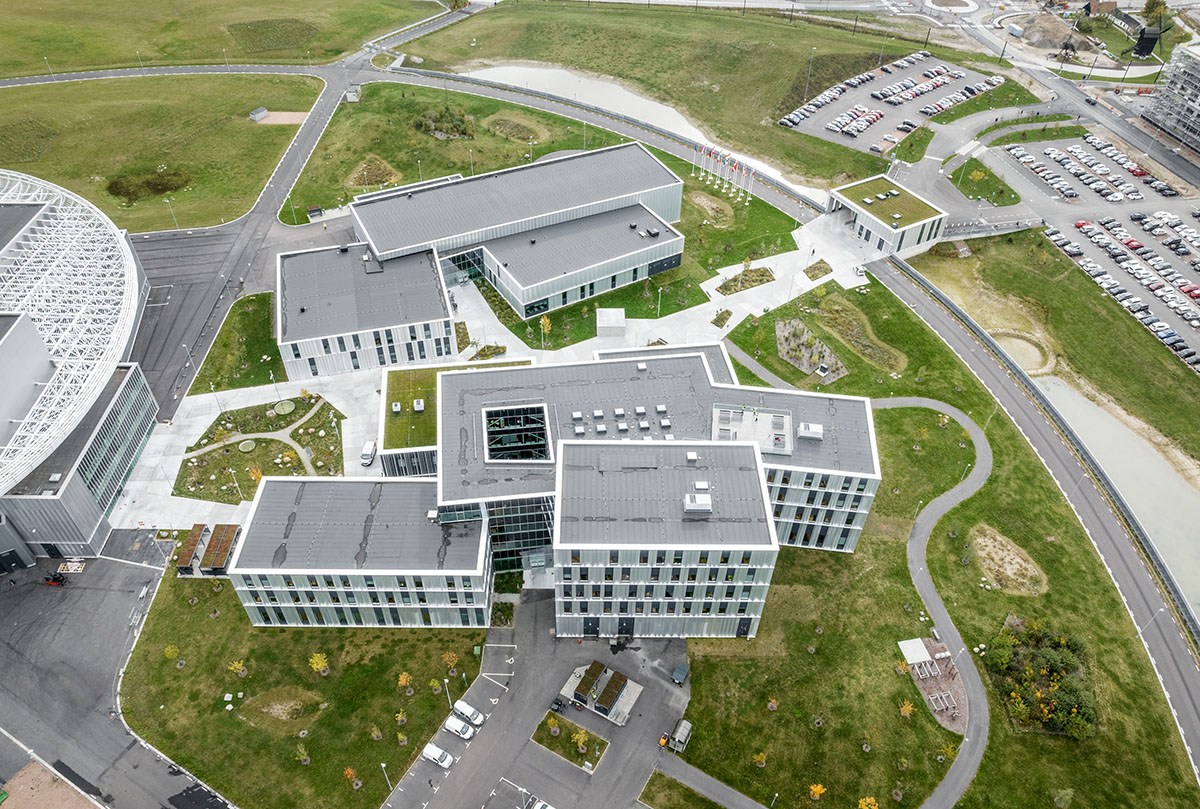
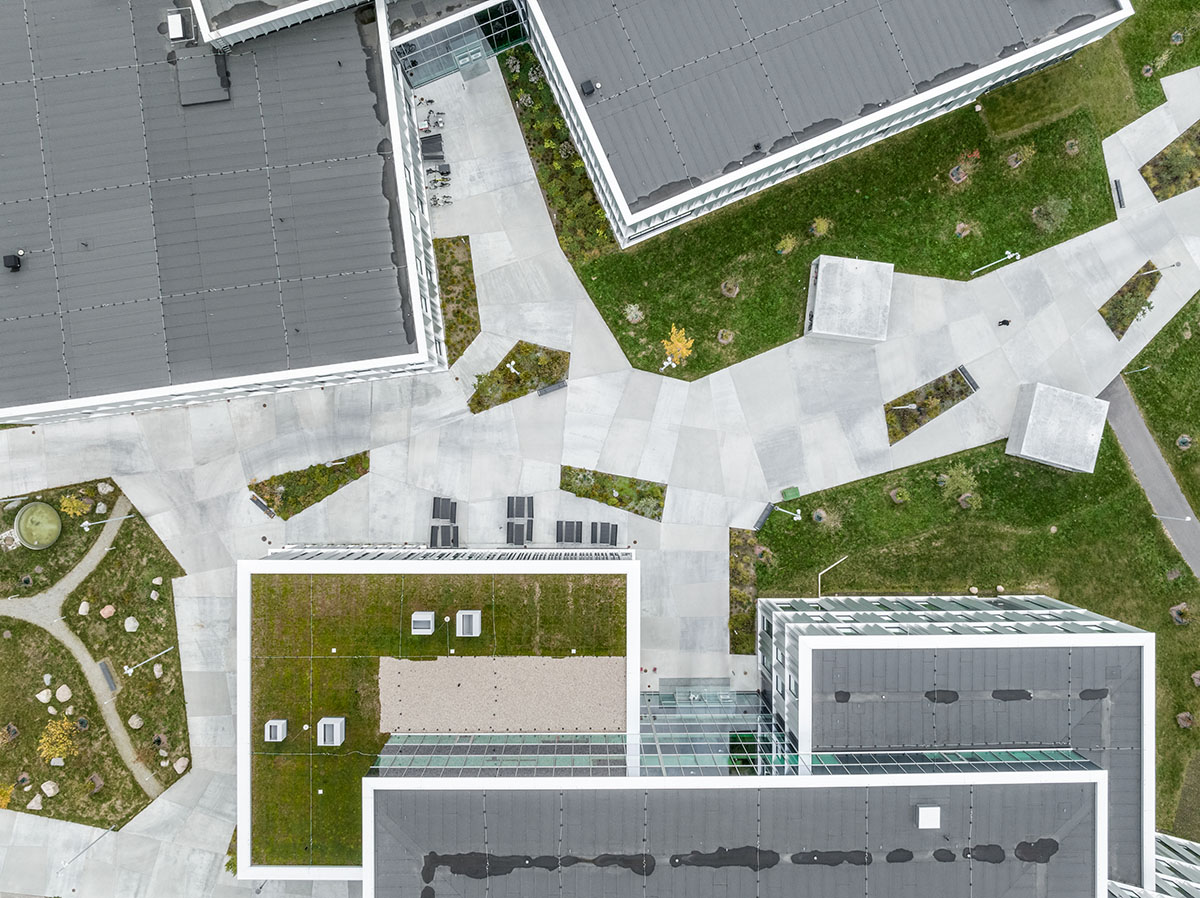
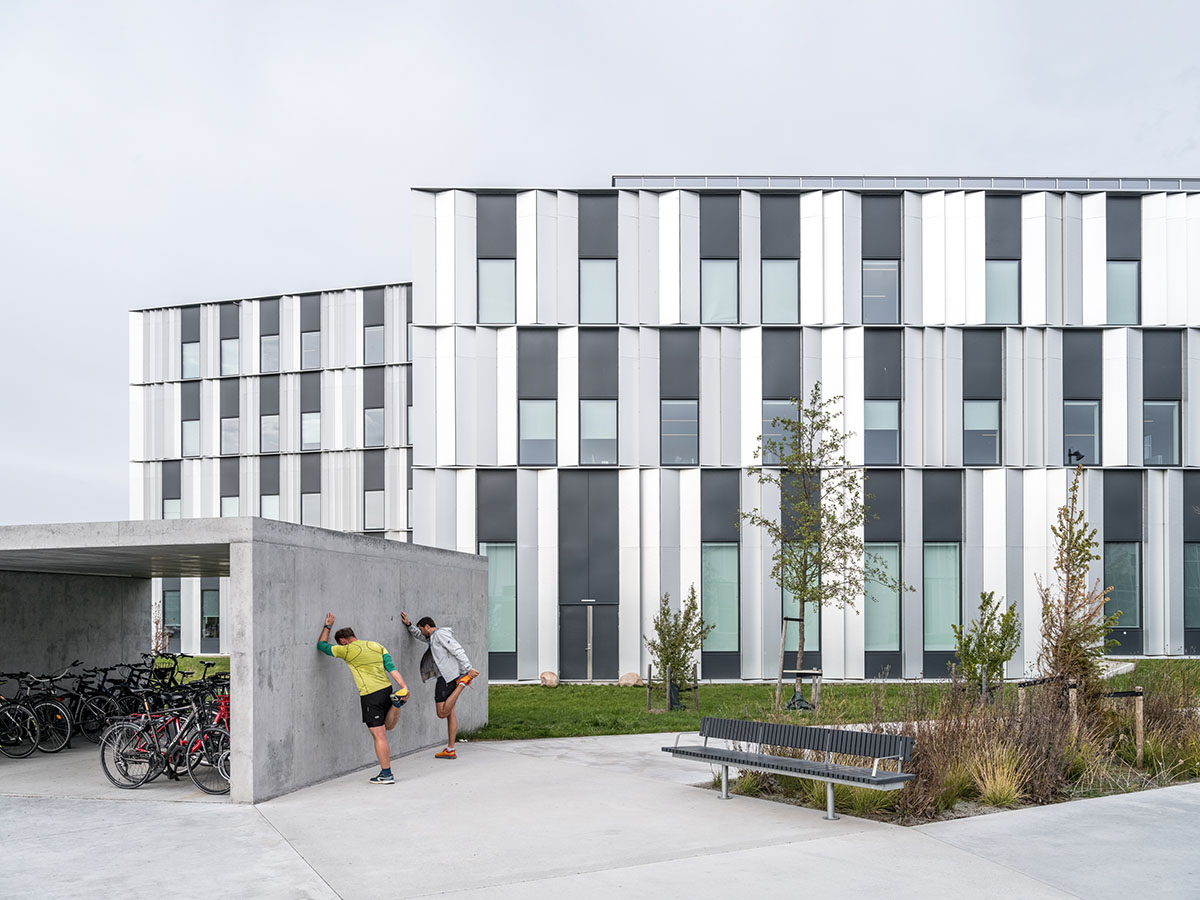
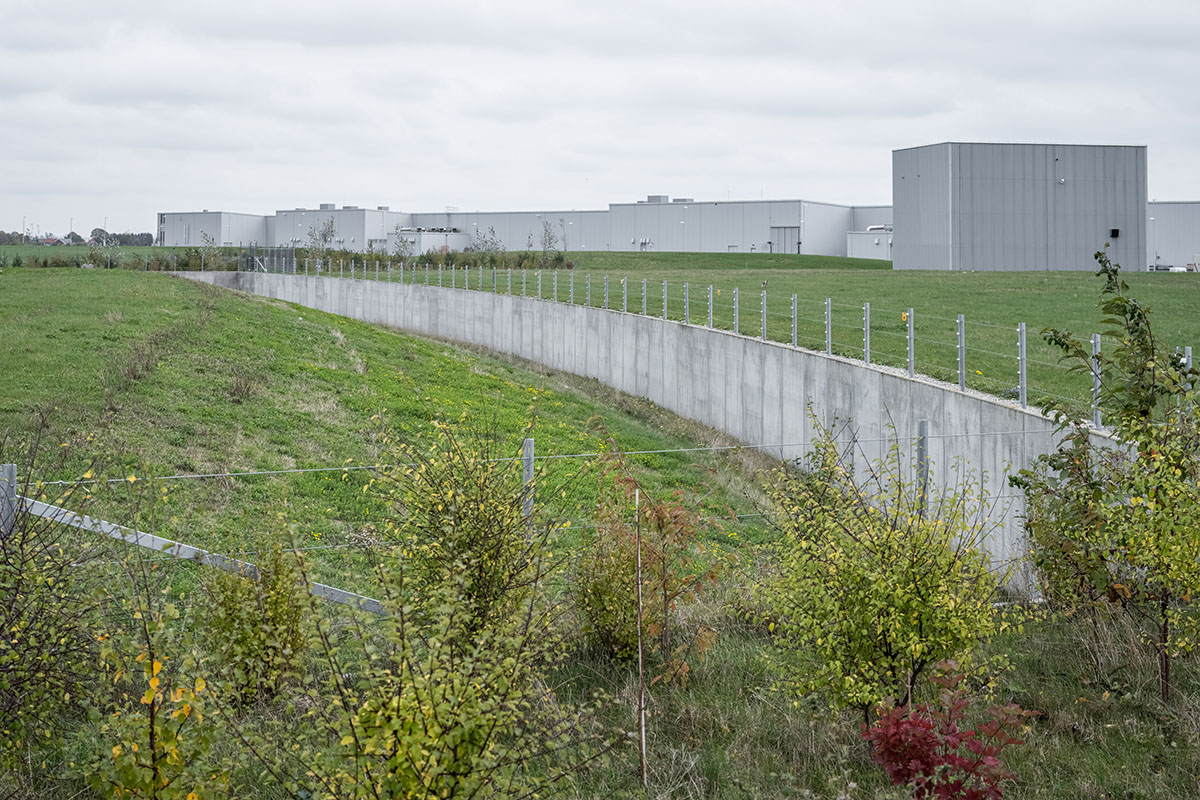
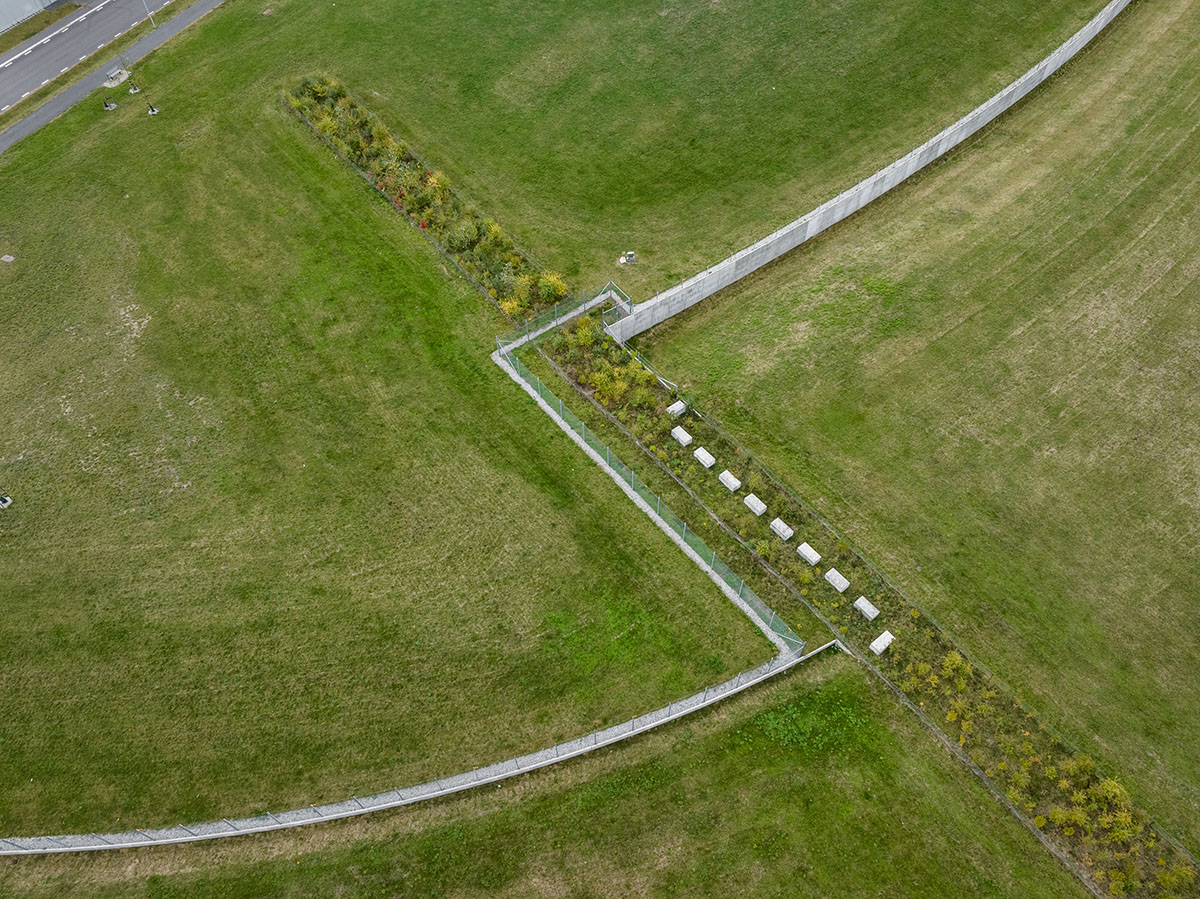
Henning Larsen also revealed new mass timber and microclimate university building in Faroe Islands.
The firm revealed design for a new ferry terminal that draws inspiration from traditional Faroese fishing boats and the historic Eastern harbor.
Project facts
Architects: Henning Larsen, Cobe
Landscape Architects: SLA
Collaborators: Buro Happold, NNE Pharmaplan, Piacon AB, Bent Lauritzen, Head of Division, Center for Nuclear Technologies, Radiation Physics
Site: approx. 70 hectares
Gross floor area: 100,000 m2
Number of users: ESS anticipates that up to 3,000 researchers from around the world will come to ESS each year to carry out experiments. At the same time ESS will provide an attractive workplace for more than 500 employees.
Certifications: BREEAM Outstanding
All images © Rasmus Hjortshøj.
> via Henning Larsen
